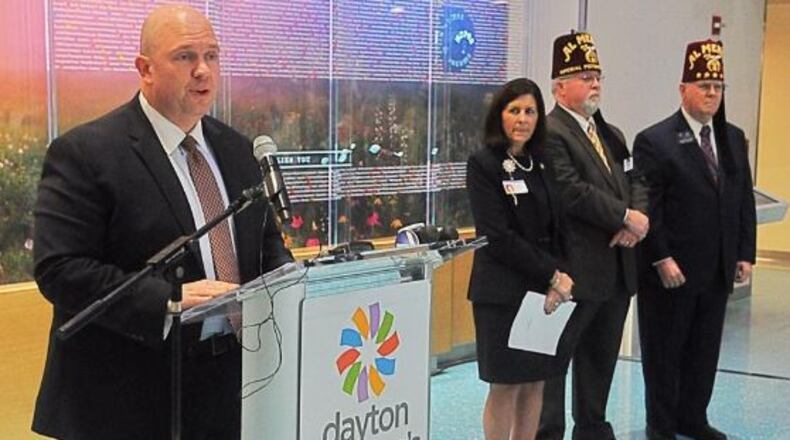The pediatric hospital provides all levels of pediatric burn treatment, as well as cleft lip and palate, plastic and reconstructive surgery for children up to age 18, regardless of a family’s ability to pay.
Shriners will still be a separately operated hospital, but Randy White, hospital administrator, said moving the hospital lets Shriners partner with Dayton Children’s.
“It’s going to allow us to work with Dayton Children’s and possibly use some of their resources and have a partnership with the world class care that their medical staff and facility offers there and marry it in with the things that we do,” White said.
The proposal for the move was first announced in 2019 and the deal was finalized one year ago.
Leading up to the decision to move to a smaller facility within the Dayton Children’s campus, there had been a steady decline in the severity and number of pediatric burns in the U.S., especially those requiring a long hospital stay.
This decline is due in large part to education and prevention efforts, many of which have been spearheaded by the Shriners Hospital system.
According to the two hospitals, the new location will allow Shriners Hospitals for Children to maintain its southwest Ohio presence with a surgical facility designed to meet and exceed today’s medical standards for its pediatric specialty care, while gaining operational efficiencies by partnering with Dayton Children’s and purchasing some services.
Shriner’s Hospitals for Children provides services for burns and pediatric plastic surgery, including cleft lip and palate, abnormal breast development in boys and girls, hemangioma, congenital hairy nevus, hand malformations, ear deformities, complex wound and skin disorders, and trauma and reconstructive conditions.
About 105 staff will be coming with them to the new location, White said.
When the proposal was first announced March 2019, Shriners said it had 218 employees in Cincinnati.
Shriners will have a space within Dayton Children’s Hospital’s campus, using an area formerly home to the pediatric intensive care unit before it moved during the hospital’s main campus expansion and tower addition two years ago.
Dayton Children’s can treat some burns but now refers the most serious cases to Shriners in Cincinnati.
The decision means the closure of one of four stand-alone hospitals in the Shriners network dedicated to pediatric burn care. Shriners has been a fixture in Cincinnati for 50 years, first opening in 1968 as the Shriners Burn Institute as part of what’s now University of Cincinnati Medical Center.
It moved to its current location in 1992, where it added services such as cleft lip and palate, specialty wound treatment, and plastic and reconstructive surgery.
The hospital is supported by the philanthropy of Shriners International and sometimes flew in children from other countries in need of treatment for severe burns.
Burn care is expensive, and Shriners makes care accessible by treating patients regardless of their ability to pay. For those who survive burns on more than 10 percent of their total body surface area, the average charge for treatment in the U.S. was $269,523, the American Burn Association reported in 2017.
As medicine advances, hospital stays for burns have also become shorter, and more patients can skip the overnight stay altogether and be treated as outpatients. During the 10-year period from 2008 through 2017, the American Burn Association said the average length of stay for women declined from 9.4 days to 7.3 days, while that for men went from 9.5 to 8.5 days. In 2000, the average stay for burns was closer to 11 days.
About the Author

